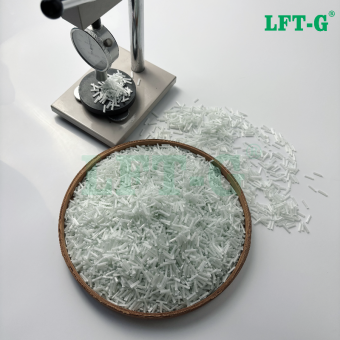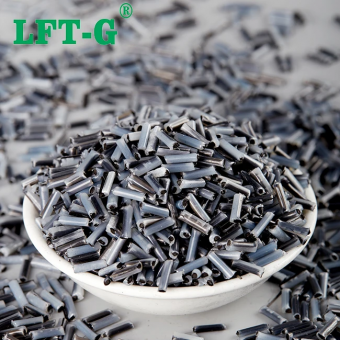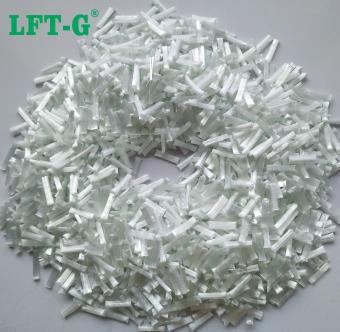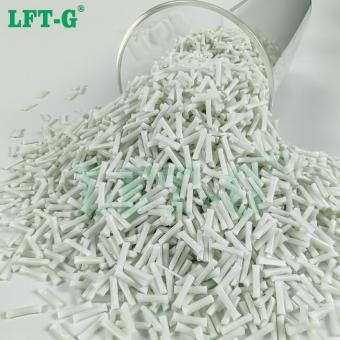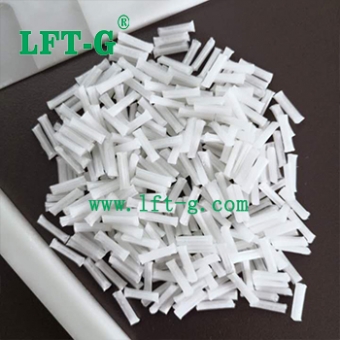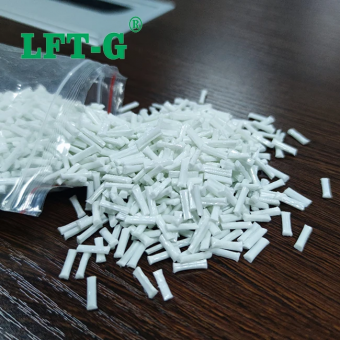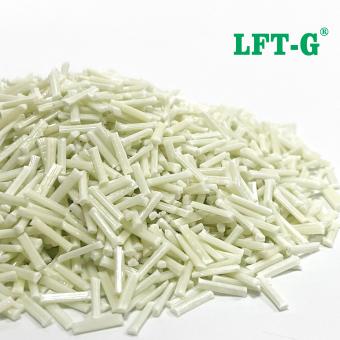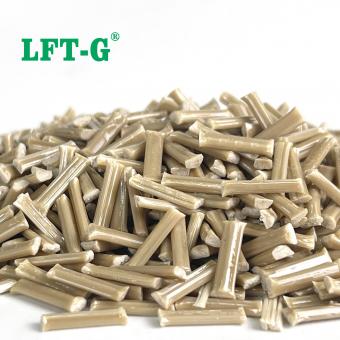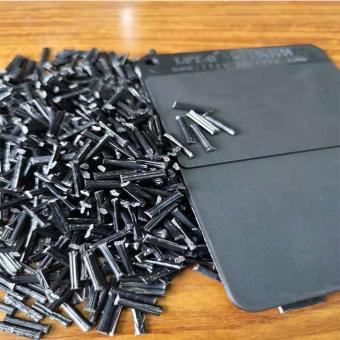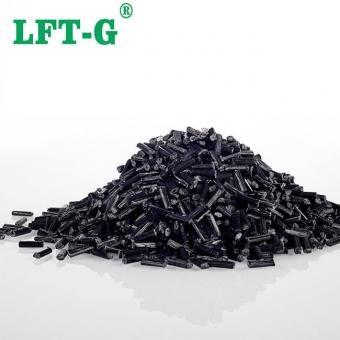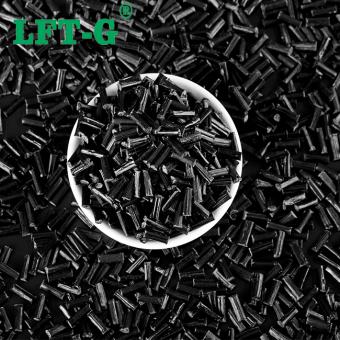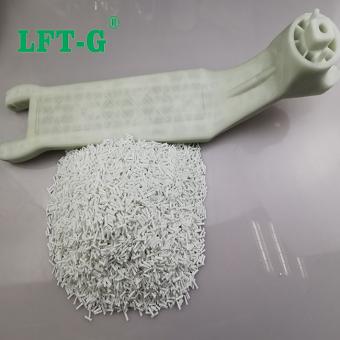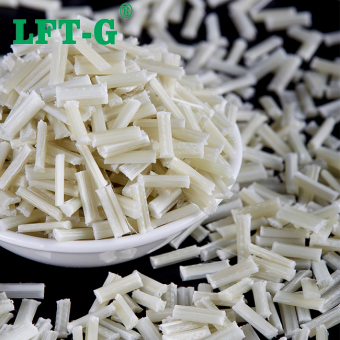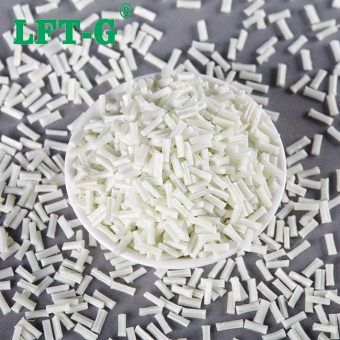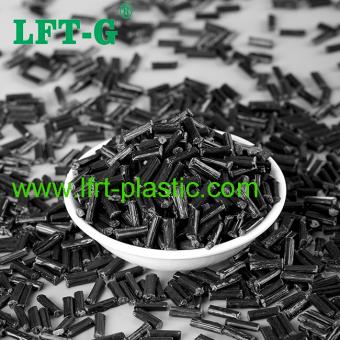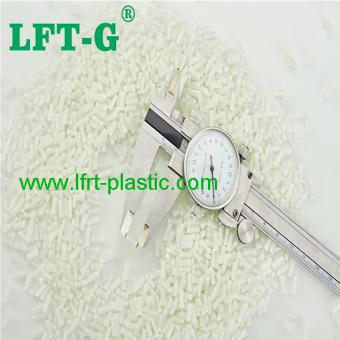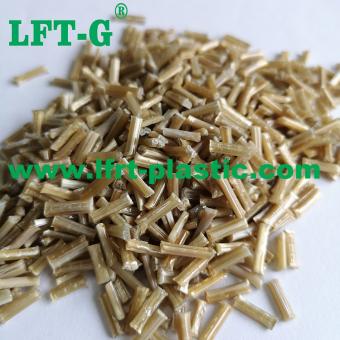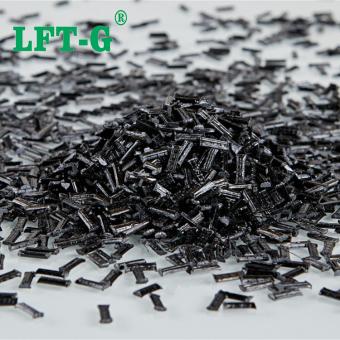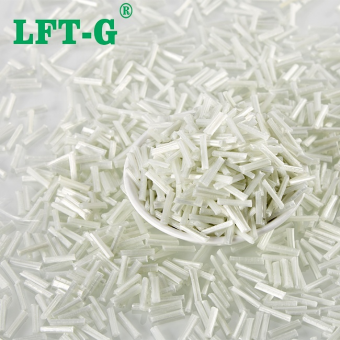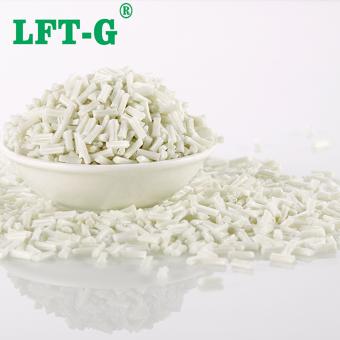-
LFT PP relleno fibra de carbono larga PP LCF 30% polímeronombre del producto: materiales termoplásticos reforzados con fibra de carbono LFT PP certificado: fda,sgs,iatf 16949, y así sucesivamente.
- PP LCF
- materiales compuestos
- Compuesto de fibra de carbono PP
- plástico reforzado con fibra de carbono
- Polímero reforzado con fibra de PP
- Fibra de carbono PP
Etiquetas :
-
LFT PP LCF fibra de carbono larga 40% polímero PP resistente a los rayos UVnombre del producto: LFT PP LCF fibra de carbono larga 40% polímero PP resistente a los rayos UV certificado: fda,sgs,iatf 16949, y así sucesivamente. apariencia: color natural y longitud de aproximadamente 12 mmver más
-
LFT PP polipropileno compuesto de fibra de carbono PP LCF 50% para silla de plásticonombre del producto: compuesto de fibra de carbono de polipropileno LFT PP PP LCF 50% para silla de plástico certificado: fda,sgs,iatf 16949, y así sucesivamente. apariencia: color natural y longitud de aproximadamente 12 mmver más
-
Marca LFT-G PA6 Poliamida6 nylon6 relleno fibra de vidrio larga40 color original para piezas de automóviles¿Qué es el plástico PA6? La poliamida (PA), generalmente llamada nailon, es un polímero de heterocadena que contiene un grupo amida (-NHCo -) en la cadena principal. Se puede dividir en grupo alifático y grupo aromático. Es el material de ingeniería termoplástico desarrollado más temprano y más utilizado. La cadena principal de poliamida contiene muchos grupos amida repetidos, se usa como un plástico llamado nailon, se usa como una fibra sintética llamada nailon. Se puede preparar una variedad de poliamidas diferentes según el número de átomos de carbono contenidos en aminas binarias y ácidos dibásicos o aminoácidos. En la actualidad existen decenas de poliamidas, entre las cuales la poliamida-6, la poliamida-66 y la poliamida-610 son las más utilizadas. La poliamida-6 es una poliamida alifática, con peso ligero, fuerte resistencia, resistencia al desgaste, resistencia débil a ácidos y álcalis y algunos solventes orgánicos, fácil moldeo y procesamiento y otras propiedades excelentes, ampliamente utilizada en fibra, plásticos de ingeniería y películas delgadas y otros campos. , pero el segmento de la cadena molecular PA6 contiene grupos amida de polaridad fuerte, enlaces de hidrógeno fáciles de formar con moléculas de agua, el producto tiene las desventajas de una gran absorción de agua, poca estabilidad dimensional, baja resistencia al impacto en estado seco y baja temperatura, fuerte resistencia a ácidos y álcalis . Advantages of nylon 6: High mechanical strength, good toughness, high tensile and compressive strength. Outstanding fatigue resistance, the parts after repeated bending can still maintain the original mechanical strength. High softening point, heat resistant. Smooth surface, small friction coefficient, wear-resistant. Corrosion resistance, very resistant to alkali and most salts, also resistant to weak acids, oil, gasoline, aromatic compounds and general solvents, aromatic compounds are inert, but not resistant to strong acids and oxidants. It can resist the corrosion of gasoline, oil, fat, alcohol, alkaline and so on, and has good anti-aging ability. It is self-extinguishing, non-toxic, odorless, good weather resistance, inert to biological erosion, and has good antibacterial and mildew resistance. Has excellent electrical performance, good electrical insulation, nylon volume resistance is high, high breakdown voltage resistance, in dry environment, can work frequency insulation material, even in high humidity environment still has good electrical insulation. Light weight, easy dyeing, easy forming, because of low melting viscosity, can flow quickly. Disadvantages of Nylon 6: Easy to absorb water, water absorption, saturated water can reach more than 3%. Poor light resistance, in the long-term high temperature environment will oxidize with oxygen in the air, the color turns brown at the beginning, and the subsequent surface is broken and cracked. Injection molding technology requirements more strict, the existence of trace moisture will cause great damage to the quality of molding; The dimensional stability of the product is difficult to control because of thermal expansion. The existence of sharp Angle in the product will lead to stress concentration and reduce the mechanical strength; If the wall thickness is not uniform, it will lead to the distortion and deformation of the parts. High precision of equipment is required in post-processing. Will absorb water, alcohol and swelling, not resistant to strong acid and oxidant, can not be used as acid-resistant materials. Why filling Long Glass Fiber? PA6 has excellent properties such as light weight, strong strength, abrasion resistance, weak acid and alkali resistance and some organic solvents, and easy molding and processing. It is widely used in the fields of fibers, engineering plastics and films. However, the molecular chain segment of PA6 contains highly polar amide groups, which are easy to form hydrogen bonds with water molecules. The product has the disadvantages of large water absorption, poor dimensional stability, low impact strength in dry state and low temperature, strong acid and alkali resistance. With the development of science and technology and the improvement of life quality, the defects in some properties of traditional PA6 materials have limited its development in some fields. In order to improve the performance of PA6 and expand its application field, PA6 should be modified. Filling enhancement modification is a common method for physical modification of PA6. It refers to the modification of PA6 by adding fillers such as glass fiber and carbon fiber into the matrix to significantly improve the mechanical properties, flame retardant properties, thermal conductivity and dimensional stability of the material. What is application of PA6-LGF? Modified section of 30% long glass fiber reinforced PA6 is the ideal material for processing power tool shell, power tool parts, engineering machinery parts and automobile parts. Its mechan...
- Compuesto de poliamida 6
- resina termoplástica lgf
- PA6 de alto impacto
- moldeo por inyección de plástico
- pa6 relleno de fibra de vidrio largo
- Plástico reforzado
Etiquetas :
-
Lft-g alta resistencia alta dureza en lugar de medalla PA12 LGF hecha por propia fábrica 24h en líneaFibra de vidrio larga PA12 El nailon de cadena larga de carbono es nailon con un grupo amida en la unidad repetitiva de la cadena principal de la molécula de nailon, y la longitud de metileno entre los dos grupos amida es superior a 10. Lo llamamos nailon de cadena larga de carbono, que incluye nailon 11, nailon 12, etc. PA12 es nailon 12, también conocido como polidodecactama, polilauractama, es un nailon de cadena larga de carbono. El material base para su polimerización es el butadieno, un material termoplástico semicristalino-cristalino. El nailon 12 es el nailon de cadena de carbono larga más utilizado, además de la mayoría de las propiedades generales del nailon, baja absorción de agua y tiene una alta estabilidad dimensional, resistencia a altas temperaturas, resistencia a la corrosión, buena tenacidad, fácil procesamiento y otras ventajas. En comparación con PA11, otro material de nailon de cadena larga de carbono, el precio del butadieno, la materia prima de PA12, es solo un tercio del precio del aceite de ricino, la materia prima de PA11. Puede reemplazar PA11 y aplicarse en la mayoría de las escenas, y tiene una amplia gama de aplicaciones en tuberías de combustible de automóviles, mangueras de frenos de aire, cables submarinos, impresión 3D y muchos otros campos. En nailon de cadena larga, en comparación con otros materiales de nailon, PA12 tiene grandes ventajas, como la tasa de absorción de agua más baja, la densidad más baja, bajo punto de fusión, resistencia al impacto, resistencia a la fricción, resistencia a bajas temperaturas, resistencia al combustible, buena estabilidad dimensional, buena efecto anti-ruido. PA12 tiene las propiedades de PA6, PA66 y poliolefina (PE, PP) al mismo tiempo, logrando la combinación de ligereza y propiedades físicas y químicas, y tiene ventajas en el rendimiento. La siguiente tabla muestra los datos de rendimiento: Rendimiento de PA12 Hay una gran cantidad de grupos metileno no polares en el nailon 12, lo que hace que la cadena molecular del nailon 12 sea más compatible. El grupo amida en el nailon 12 es polar y la energía de cohesión es muy grande, puede formar enlaces de hidrógeno entre las moléculas, por lo que la disposición molecular es regular. Por lo tanto, el nylon 12 tiene alta cristalinidad y alta resistencia. El nailon 12 tiene baja absorción de agua, buena resistencia a bajas temperaturas, buena estanqueidad al aire, excelente resistencia a los álcalis y aceites, resistencia media al alcohol, ácidos inorgánicos diluidos e hidrocarburos aromáticos, buenas propiedades mecánicas y eléctricas, y es un material autoinflamable. Podemos ofrecerte: 1. Parámetros técnicos del material LFT&LFRT y diseño de vanguardia; 2. Diseño y recomendaciones del frente del molde; 3. Brindar soporte técnico, como moldeo por inyección y moldeo por extrusión. Certificación del sistema Certificación del Sistema de Gestión de Calidad ISO9001/1949 Certificado de Acreditación de Laboratorio Nacional Certificado honorario de empresa de innovación de plásticos modificados Pruebas REACH y ROHS de metales pesados Preguntas frecuentes 1. ¿La inyección de fibra de vidrio larga y fibra de carbono larga tiene requisitos especiales para las máquinas y moldes de moldeo por inyección? R: Ciertamente hay requisitos. Especialmente desde la estructura del diseño del producto, así como la boquilla del tornillo de la máquina de moldeo por inyección y el proceso de moldeo por inyección de la estructura del molde, se deben considerar los requisitos de fibra larga. 2. El producto es fácil de quebrarse, por lo que cambiar para usar materiales termoplásticos reforzados con fibra larga puede resolver este problema. R: Las propiedades mecánicas generales deben mejorarse. Las características de la fibra de vidrio larga y la fibra de carbono larga son las ventajas en las propiedades mecánicas. Tiene de 1 a 3 veces mayor (dureza) que la fibra corta, y la resistencia a la tracción (resistencia y rigidez) aumenta de 0,5 a 1 veces. 3. ¿Cuáles son las principales características y ventajas de los termoplásticos reforzados con fibra de vidrio larga? R: En comparación con los materiales de fibra corta tradicionales, las características principales de la fibra de vidrio larga termoplástica LFT-G y la fibra de carbono larga son las propiedades mecánicas, el alto impacto y el módulo de tracción, que son más adecuados para algunos productos grandes o piezas estructurales de carga. Puede hacer moldeo por inyección, extrusión de láminas, tubos de perfil, etc. y es de procesamiento simple. Otras preguntas, póngase en contacto con nuestro servicio en línea las 24 horas.
- poliamida12
- resina PA12
- Nueva resina termoplástica de alto rendimiento
- Plástico reforzado con nailon12
- en cambio medalla pa12 materiales
- granos de plastico
Etiquetas :
-
PA6 Nylon6 Poliamida6 compuesto Fibra de vidrio larga Plástico modificado 12 mm de longitud color originalPA6 material PA6 is one of the most widely used materials in the current field, and PA6 is a very good engineering plastic with balanced and good performance. The raw materials for the manufacture of nylon 6 engineering plastic are extensive and inexpensive, and it is not restricted by the technological monopoly of foreign companies. However, in order to make good use of this inexpensive and excellent material, we must first understand it. Today, we will start with glass fiber reinforced PA6 engineering plastics, because it is the most important category of PA6 engineering plastics. Just like any other engineering plastics, PA6 has advantages and disadvantages, such as high water absorption, low temperature impact toughness and dimensional stability is relatively poor. So engineers will use different methods to make PA6 better, which we call modification. At present, the most common method is to blend and modify PA6 with glass fiber (GF). Today, we will take a look at the mechanical properties of PA6 engineering plastics under the glass fiber GF system for reference and help us select materials. PA6-LGF 1. Influence of glass fiber content on PA6 engineering plastics We can find from the application and experiment that the content index is often one of the biggest influencing factors in fiber reinforced composites. As the glass fiber content increases, the number of glass fibers per unit area of the material will increase, which means that the PA6 matrix between the glass fibers will become thinner. This change determines the impact toughness, tensile strength, bending strength and other mechanical properties of glass fiber reinforced PA6 composites. In terms of impact performance, the increase of glass fiber content will greatly increase the notch impact strength of PA6. Taking long glass fiber (LGF) filling PA6 as an example, when the filling volume increases to 35%, the notch impact strength will increase from 24.8J/m to 128.5J/m. But the glass fiber content is not more is better, short glass fiber (SGF) filling volume reached 42%, the impact strength of the material reached the highest 17.4kJ/㎡, but continue to add will let the gap impact strength showed a downward trend. In terms of bending strength, the increase of the amount of glass fiber will make the bending stress can be transferred between the glass fiber through the resin layer; At the same time, when the glass fiber is extracted from the resin or broken, it will absorb a lot of energy, thus improving the bending strength of the material. The above theory is verified by experiments. The data show that the bending elastic modulus increases to 4.99GPa when the LGF (long glass fiber) is filled to 35%. When the content of SGF (short glass fiber) is 42%, the bending elastic modulus reaches 10410MPa, which is about 5 times that of pure PA6. 2. Influence of glass fiber retention length on PA6 composites The fiber length of the glass fiber also has an obvious effect on the mechanical properties of the material. When the length of the glass fiber is less than the critical length (the length of the fiber when the material has the tensile strength of the fiber), the interface binding area of the glass fiber and the resin increases with the increase of the length of the glass fiber. When the composite material is broken, the resistance of the glass fiber from the resin is also greater, so as to improve the ability to withstand the tensile load. When the length of glass fiber exceeds the critical, the longer glass fiber can absorb more impact energy under impact load. In addition, the end of the glass fiber is the initiation point of crack growth, and the number of long glass fiber ends is relatively less, and the impact strength can be significantly improved. The experimental results show that the tensile strength of the material increases from 154.8MPa to 164.4MPa when the glass fiber content is kept at 40% and the length of the glass fiber increases from 4mm to 13mm. The bending strength and notched impact strength increased by 24% and 28%, respectively. Además, la investigación muestra que cuando la longitud original de la fibra de vidrio es inferior a 7 mm, el rendimiento del material aumenta de manera más evidente. En comparación con la fibra de vidrio corta, el material PA6 reforzado con fibra de vidrio larga tiene una mejor apariencia de resistencia a la deformación y puede mantener mejor las propiedades mecánicas en condiciones de alta temperatura y humedad. TDS para su referencia PA6 se puede convertir en material reforzado con fibra de vidrio larga agregando un 20% -60% de fibra de vidrio larga según las características del producto. PA6 con fibra de vidrio larga añadida tiene mejor fuerza, resistencia al calor, resistencia al impacto, estabilidad dimensional y resistencia a la deformación que sin fibra de vidrio añadida. Los siguientes TDS muestran los datos de PA6-LGF30. Solicitud PA6-LGF tiene la mayor proporción de aplicaciones en la industria...
- Materiales de resina termoplástica PA6
- nailon 6 gránulos
- gránulos de plástico reforzado con fibra de vidrio
- compuestos de fibra larga pa6
- Moldeo por inyección de plástico
- Material reforzado LFT-G
Etiquetas :
-
LFT-G PA66 Compuesto de Nylon66 Fibra de carbono larga 20% -60% Moldeo por inyección de mayor rendimientoPolyamide series Nylon is the common name of polyamide (PA), is the general term for thermoplastic resins containing repeated amide groups on the main chain of the molecule, including aliphatic polyamide, aliphatic aromatic polyamide and aromatic polyamide. As the first of the five engineering plastics, nylon has an extremely wide range of industrial applications, mainly used in automotive parts, mechanical parts, electronic and electrical appliances, cosmetics, adhesives and packaging materials and other fields. Among them, aliphatic polyamide, mainly nylon 66, is the most productive and widely used. Polyamide66 Nylon 66 (PA66) is a kind of polyamide formed by the condensation of adipic acid and adipdiamine. The molecular formula is shown in the figure Advantages: high strength, corrosion resistance, good wear resistance, and has self-lubrication, flame retardant, non-toxic environmental protection and other excellent performance. Disadvantages: poor heat and acid resistance, low impact strength in dry state and low temperature, water absorption greatly affects the dimensional stability and electrical properties of products. Long carbon fiber filling PA6 Long carbon fiber is an inorganic polymer material with more than 90% carbon content, which is obtained by carbonization and graphitization of organic fibers. The microstructure of long carbon fiber is similar to that of artificial graphite (C atoms arranged in layers). Advantages: light weight, high strength, high modulus, high temperature resistance, wear resistance, corrosion resistance, fatigue resistance, electrical and thermal conductivity, etc. Disadvantages: high cost, relatively difficult to infiltrate, poor transparency, defects difficult to check, etc. According to the source of carbon fiber, long carbon fiber can be divided into: Polyacrylonitrile-based long carbon fiber Asphaltic long carbon fiber Viscosified long carbon fiber Long carbon fiber composite material is a very useful structural material, it is not only light, high temperature resistance, but also has a high tensile strength and elastic modulus, is the manufacturing of spacecraft, rockets, missiles, high-speed aircraft and large passenger aircraft indispensable components of the material. It is also widely used in transportation, chemical industry, metallurgy, construction and other industrial sectors as well as sports equipment. Datasheet for reference The density of A66/CF composite material is less than 1.3, which is less than one sixth of the density of steel (7.85), achieving the purpose of lightweight, which is conducive to energy saving and consumption reduction. In the PA66/CF composite system, the length of CF is about 0.5 ~ 0.7mm, the interface between PA66 matrix and carbon fiber is fully combined, and nylon 66 is well wrapped around carbon fiber. The fracture surface of PA66/CF sample is rough, and the PA66/CF composite is a ductile material. Compared with PA66, the mechanical properties of PA66/CF composites are significantly improved. Trade fairs we attended Xiamen LFT composite plastic Co., Ltd. es una empresa de marca que se enfoca en LFT y LFRT. Serie de fibra de vidrio larga (LGF) y serie de fibra de carbono larga (LCF). El termoplástico LFT de la compañía se puede usar para moldeo por inyección y extrusión LFT-G, y también se puede usar para moldeo LFT-D. Se puede producir de acuerdo con los requisitos del cliente: 5~25 mm de longitud. Los termoplásticos reforzados con infiltración continua de fibra larga de la compañía han pasado la certificación del sistema ISO9001 y 16949, y los productos han obtenido muchas marcas comerciales nacionales y muchas patentes.
- "Compuesto LFT"
- largo fibra de carbono poliamida pa66
- gránulos de plástico reforzado con fibra de carbono
- compuestos de fibra larga pa66
- pa66 lcf30
- gránulos pa66 compuestos de fibra larga
Etiquetas :
-
Relleno de plástico reforzado con LFT PA12 fibra de vidrio larga color blanco original para piezas deportivas y energía solarPA12 El nailon 12 es el menos denso de la serie de nailon con 1,02. Sus características incluyen baja absorción de agua, buena estabilidad dimensional, buena resistencia a bajas temperaturas, hasta -70 ℃; Bajo punto de fusión, procesamiento de formación fácil, el rango de temperatura de formación es amplio; La estabilidad química suave, la resistencia al aceite, la resistencia al desgaste son buenas y es un material autoextinguible. La temperatura de uso a largo plazo es de 80 ℃ (hasta 90 ℃ después del tratamiento térmico), puede funcionar a 100 ℃ durante mucho tiempo en aceite, el gas inerte puede funcionar a 110 ℃ durante mucho tiempo. Fibra de vidrio larga Los termoplásticos reforzados con fibra larga (termoplásticos reforzados con fibra), denominados LFT, se refieren a materiales compuestos reforzados con fibra de vidrio (LFT) con una longitud de más de 5 mm, tienen buenas propiedades de procesamiento de moldeo, se pueden moldear por inyección, moldeo, extrusión y otros procesos , Cuando se forma, el plástico tiene buena fluidez de moldeo y se puede formar a baja presión. Se puede formar en productos con formas complejas y la masa aparente de los productos es mejor que GMT. TDS solo como referencia Solicitud Embalaje Introducción a la industria LFT y LFRT, los plásticos de ingeniería termoplásticos reforzados con fibra larga, en comparación con los termoplásticos reforzados con fibra corta convencionales, suelen tener una longitud de fibra de menos de 1 a 2 mm en los termoplásticos reforzados con fibra corta convencionales, mientras que el proceso LFT los plásticos de ingeniería termoplásticos producidos han sido capaces para mantener longitudes de fibra por encima de 5 a 25 mm. La fibra larga se impregna con un sistema de resina especial para obtener una tira larga que se humedece lo suficiente con la resina y luego se corta en la longitud deseada según sea necesario. La resina matriz más utilizada es PP, seguida de PA6, PA66, PPA, PA12, MXD6, PBT, PET, TPU, PPS, LCP, PEEK y similares. Las fibras convencionales incluyen fibra de vidrio y fibra de carbono. Las fibras especiales incluyen fibra de basalto y fibra de cuarzo. La LFT del material de fibra larga puede lograr mejores propiedades mecánicas.
- fibra de vidrio larga poliamida12
- termoplásticos reforzados con fibras largas
- pa12 lgf30
- poliamida 12 lgf30
- lft pa6 modificado
Etiquetas :
-
LFT-G PPS Sulfuro de polifenileno LGF fibra de vidrio larga compuesta plásticos de ingeniería de color personalizadosWhat is the PPS? Polyphenylene sulfide (PPS) is a new thermoplastic resin with high performance. By filling, modified with excellent high temperature resistance, corrosion resistance, wear resistance, flame retardant, balanced physical and mechanical properties and excellent dimensional stability and excellent electrical properties and other characteristics of the new high performance thermoplastic resin, as well as high mechanical strength, chemical resistance, flame resistance, good thermal stability, excellent electrical properties and other advantages. It has the advantages of hard and brittle, high crystallinity, inflammability, good thermal stability, high mechanical strength, excellent electrical properties, strong chemical corrosion resistance and so on. The mechanical properties of pure PPS are not high, especially the impact strength is relatively low. Good creep resistance under load, high hardness; High wear resistance, the wear at 1000 RPM is only 0.04g, and will be further improved after filling F4 and molybdenum disulfide; It also has a certain degree of self-moistening. The mechanical properties of PPS are less sensitive to temperature. What is the PPS-LGF? PPS is one of the best varieties of heat resistance in the engineering plastic department. The thermal deformation temperature of the material modified by glass fiber is generally greater than 260 degrees, and the chemical resistance is second only to PTFE. In addition, it also has small shrinkage, low water absorption, good fire resistance. Good resistance to vibration fatigue, strong resistance to arc, especially at high temperature. Excellent electrical insulation in high humidity. But its disadvantages are brittleness, toughness, low impact strength, after modification, can overcome the above shortcomings, obtain very excellent comprehensive performance. As a plastic, its properties and uses far exceed those of ordinary plastics, and in many ways it is as good as metal materials. Excellent material PPS has the advantages of high temperature corrosion resistance, excellent mechanical properties, can replace metal including stainless steel, copper, aluminum, alloy, etc., is considered to be the best substitute for metal, copper. What is the application of PPS-LGF? PPS is now widely used in automotive, aerospace, household appliances, mechanical construction and chemical industry for a variety of structural parts, transmission parts, insulation parts, corrosion resistant parts and seals. Under the condition of ensuring sufficient strength and other properties, the weight of the product is greatly reduced. Datasheet for reference Details Number Color Length MOQ Package Sample Delivery time Port of Loading PPS-NA-LGF30 Original color (can be customized) 5-25mm above 25kg 25kg/bag Available 7-15 days after shipment Xiamen Poer Proceso de producción Marcas y patentes _ Equipos y clientes _ Te ofreceremos: 1. Parámetros técnicos del material LFT y LFRT y diseño de vanguardia 2. Diseño y recomendaciones del frente del molde 3. Brindar soporte técnico, como moldeo por inyección y moldeo por extrusión.
- PPS fibra de vidrio larga 40
- compuestos pps lgf
- materiales de resina pps lft
- plástico reforzado lft-g pps
- pps de relleno de fibra de vidrio larga
- resina termoplastica pps lgf
Etiquetas :
-
LFT PPS Material compuesto de fibra de carbono largo reforzado con plástico lcf de alta tenacidad para automóvilesMateriales PPS-LCF El sulfuro de polifenileno (PPS) es un polímero semicristalino lineal con anillo de benceno y átomos de azufre compuesto por una cadena principal molecular, su punto de fusión es de aproximadamente 280 ℃ y tiene muchas características excelentes, con una serie de excelentes propiedades, como excelentes propiedades mecánicas , estabilidad química, resistencia a los solventes, retardante de llama y tiene buenas propiedades de procesamiento y moldeo. Como un tipo de plástico de ingeniería especial con la mayor producción en la actualidad, la base de aplicación del mercado está madura. Además, en el proceso de moldeo, se pueden procesar moldeo por pultrusión, moldeo por inyección, moldeo y otros métodos. Al reforzar la resina PPS con fibra de carbono, se pueden preparar compuestos con excelentes propiedades mecánicas y resistencia al calor. En la actualidad, los materiales compuestos reforzados con fibra de PPS se han utilizado ampliamente en el campo aeroespacial. Tencate Company de los Estados Unidos utiliza la resina PPS de la marca Fortron de la compañía Ticona de Alemania para producir compuestos de fibra de carbono/PPS basados en el método de moldeo por prensado en caliente de tela. El material se utiliza en el borde principal del ala del avión Airbus A340 y A380, la estructura del alerón del avión A340, la viga y la costilla de tensión de la puerta del tren de aterrizaje del avión Fokker50, la cola del avión de negocios G650, el timón y los componentes del elevador. Ventajas Performance characteristics: ◊ receiving aerospace OEM specifications and receiving certification; ◊ excellent cost performance; ◊ Working temperature exceeding Tg according to the design requirements on parts; ◊ laminates can protect against lightning strike and electrochemical corrosion. ◊ inherent flame retardant ◊ excellent chemical stability and solvent resistance; ◊ Long-term storage at ambient temperature. Main applications: ◊ Major and minor aircraft structures: ◊ wing leading edge, engine tower, body splint structure, etc. ◊ aircraft interior structure: ◊ seat structure parts, trunk, etc ◊ On specific requirements on corrosion resistance, dimensional stability, and shock absorption on high-end industrial areas Application Proceso de producción Nuestro equipo y clientes ¡Ven y contáctanos!
- PPS reforzado con fibra de carbono larga
- ppslcf30
- compuestos de fibra larga pps
- LFT de pps
Etiquetas :
-
LFT-G TPU Relleno de uretano termoplástico materiales de fibra de vidrio largos compuestos plásticos de alto rendimientoWhat is TPU? TPU(Thermoplastic polyurethanes) name is elastomer rubber. It is mainly divided into polyester type and polyether type, its hardness range is wide (60HA-85HD), wear resistance, oil resistance, transparent, good elasticity, in daily necessities, sports goods, toys, decorative materials and other fields are widely used, halogen-free flame retardant TPU can also replace soft PVC to meet more and more fields of environmental protection requirements. The so-called elastic body refers to the glass transition temperature is lower than the room temperature, elongation at break >50%, the external force removed after the good recovery polymer material. Polyurethane elastomer is a special category of elastomer, polyurethane elastomer hardness range is very wide, performance range is very wide, so polyurethane elastomer is a kind of polymer material between rubber and plastic. It can be heated plasticized and has little or no crosslinking in chemical structure. Its molecules are basically linear, but there is some physical crosslinking. This type of polyurethane is called a TPU. Why filling long glass fiber? Long glass fiber reinforced composites can solve your problems when other methods of reinforced plastics do not provide the performance you need or if you want to replace metal with plastic. Long glass fiber reinforced composites can cost-effectively reduce the cost of goods and effectively improve the mechanical properties of engineering polymers, and increase the durability by forming long fibers to form a long-fiber-reinforced internal skeleton network. Performance is preserved in a wide range of environments. Compared with Short glass fiber Application Car doors and windows, Safty toe, Mechanical parts, Pneumatic nail gun boxes, Professional power tools, Nut and bolts, Etc. About us Xiamen LFT composite plastic Co., Ltd. es una empresa de marca que se enfoca en LFT y LFRT. Serie de Fibra de Vidrio Larga (LGF) y Serie de Fibra de Carbono Larga (LCF). El termoplástico LFT de la empresa se puede utilizar para moldeo por inyección y extrusión LFT-G, y también para moldeo LFT-D. Se puede producir de acuerdo con los requisitos del cliente: 5~25 mm de largo. Los termoplásticos reinofred de infiltración continua de fibra larga de la compañía han pasado la certificación del sistema ISO9001 y 16949, y los productos han obtenido muchas marcas comerciales y patentes nacionales. Certificación del sistema de gestión de calidad ISO9001 y 16949 Certificado de Acreditación de Laboratorio Nacional Empresa de innovación de plásticos modificados Certificado Honorario Pruebas REACH y ROHS de metales pesados
- lft tpu
- fibra de vidrio larga TPU
- gránulos de TPU compuesto de fibra larga
- TPU reforzado con fibra de vidrio largo lft
Etiquetas :
-
Xiamen LFT MXD6 relleno fibra de vidrio larga30 moldeo por inyección de alta dureza muestra de color natural disponibleMXD6 Polyadipyl-m-benzoylamine, referred to as mxd6, generally referred to as "nylon mxd6", resin than other engineering plastics have higher mechanical strength and modulus, is also a special high barrier nylon material. Although the barrier of mxd6 is slightly worse than that of pvdc and evoh, its barrier is not affected by temperature and humidity, which is especially suitable for high temperature and humid occasions. In today's barrier packaging and plastic instead of steel general trend, nylon mxd6 has become one of the most eye-catching new plastic varieties. Structure performance: PA MXD6 nylon material has high strength, high rigidity, high thermal deformation temperature, small thermal expansion coefficient; Dimensional stability, low water absorption rate and small size change after water absorption, mechanical strength changes less; Forming shrinkage is small, suitable for precision forming processing; Excellent coating performance, especially suitable for high temperature surface coating; Excellent barrier to oxygen, carbon dioxide and other gases. Excellent mechanical and thermal properties and high strength, high modulus and heat resistance, high barrier, excellent cooking resistance Advantages 1、Maintain high strength and rigidity in a wide temperature range 2、High heat deflection temperature, small coefficient of thermal expansion 3、Low water absorption, small size change after water absorption, less mechanical strength reduction 4、Small shrinkage rate of molding, suitable for precision molding process 5、Excellent paintability, especially suitable for surface painting under high temperature 6、Excellent barrier to oxygen, carbon dioxide and other gases MXD6-LGF MXD6 applications in the plastics modification industry MXD6 can be compounded with glass fibers, carbon fibers, minerals and/or advanced fillers for materials containing 50-60% glass fiber reinforcement with exceptional strength and stiffness. Even when filled with high levels of glass fiber, its smooth, resin-rich surface creates a high gloss finish like no glass fiber, making it ideal for painting, metal coating or creating naturally reflective housings. 1、Alta fluidez para paredes delgadas Es una resina de flujo muy alto que puede rellenar fácilmente paredes delgadas de hasta 0,5 mm de espesor, incluso con un contenido de fibra de vidrio de hasta el 60%. 2、Excelente acabado superficial La superficie perfecta rica en resina tiene un aspecto muy pulido, incluso con un alto contenido de fibra de vidrio. 3 、 MXD6 de muy alta resistencia y rigidez con un 50-60 % de refuerzo de fibra de vidrio tiene una resistencia a la tracción y a la flexión similar a la de muchos metales fundidos y aleaciones. 4, buena estabilidad dimensional A temperatura ambiente, el coeficiente de expansión lineal (CLTE) del compuesto de fibra de vidrio MXD6 es similar al de muchos metales fundidos y aleaciones. Es altamente reproducible debido a la baja contracción y la capacidad de mantener tolerancias estrechas (las tolerancias de longitud pueden ser tan bajas como ± 0,05 % si se forma correctamente). TDS solo como referencia Solicitud MXD6 reemplaza el metal para fabricar piezas estructurales de alta calidad para automóviles, electrónica y electrodomésticos En piezas automotrices, muchas ocasiones requieren productos materiales con alta resistencia mecánica y buena resistencia al aceite, y pueden usarse en el rango de 120-160 ℃ durante mucho tiempo. El MXD6 reforzado con fibra de vidrio tiene una resistencia al calor de hasta 225 ℃ y una tasa de retención de alta resistencia a alta temperatura, que se puede usar para bloques de cilindros, culatas, pistones, engranajes síncronos de motores de automóviles, etc. La aleación MXD6/PPO tiene las propiedades de resistencia a altas temperaturas, alta resistencia, resistencia al aceite, resistencia al desgaste, buena estabilidad dimensional, etc. Puede usarse para paneles exteriores verticales de carrocerías de automóviles, guardabarros delanteros y traseros, cubiertas de ruedas y es casi imposible ser estampado y formado por placas de acero. partes curvas y chasis de automóviles. Sobre nosotros
- fibra de vidrio larga MXD6
- gránulos largos de plástico reforzado con fibra de vidrio
- MXD6 LGF
- Compuestos MXD6
Etiquetas :

 correo electrónico
correo electrónico español
español English
English français
français Deutsch
Deutsch русский
русский italiano
italiano português
português العربية
العربية 日本語
日本語 한국의
한국의 中文
中文




